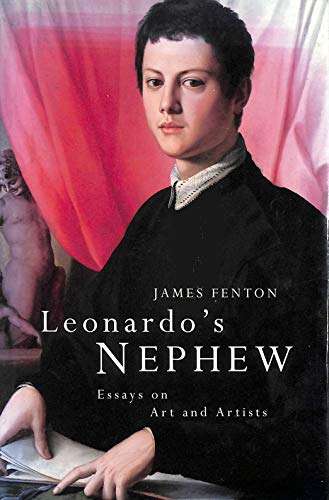
Leonardo's Nephew: Essays on Art and Artists
Check my rate
| Main centres: | 1-3 business days |
| Regional areas: | 3-4 business days |
| Remote areas: | 3-5 business days |

| Main centres: | 1-3 business days |
| Regional areas: | 3-4 business days |
| Remote areas: | 3-5 business days |
Published by Viking, 1998, hardcover, illustrated, index, 116 pages, condition: very good.
Over the past few years, James Fenton has published a series of long essays on art history in The New York Review of Books. This book brings the pieces together along with numerous black-and-white illustrations, providing a fascinating sideways look at painting and sculpture. Displaying an enviable depth of interest and knowledge, Fenton's pieces range from a controversial essay on Egyptian funerary portraits--he questions whether in fact they were death portraits at all--and an intriguing piece on Leonardo's virtually unknown but extremely talented nephew Pierino da Vinci, to essays on Degas, Picasso, and the American painter Thomas Jones, among others. An unexpected reference or forgotten bit of history is often Fenton's entre into his subject: he approaches Jasper Johns via the patriotic sculptors of the turn of the century; Joseph Cornell through the history of the European Wunderkammer, or cabinet of curiosities; and the nature of the statue through an examination of Freud's attachment to his startlingly large collection of antique statuettes. Endlessly illuminating and packed with suggestive detail, Leonardo's Nephew opens doors on the back rooms and shadowy passageways of art history.
This savory, erudite collection of essays makes a reader feel incomparably lucky, as if he or she is seated next to a learned, original, decently friendly fellow traveler on an intercontinental flight. Author James Fenton has a style that is both intimate and scholarly. It is always amusing and illuminating; it never cloys. The subjects of the 15 essays--all but two originally published in the New York Review of Books--include Freud's collection of statuary; the remarks of Renoir and Degas made at two parties in the same home (the artists, not on speaking terms, were invited on different nights); Jasper Johns's early life and his later use of the American flag in his paintings; a talented nephew of Leonardo da Vinci whose work was oddly described by both Vasari and Picasso; and more.
Fenton's writing is most moving in those essays that take off from a chance thought or a bit of accidentally discovered history, like the one on Freud. And those that began as book reviews are in a class by themselves. Fenton generally shreds or praises his subjects according to his own meticulous research, which refreshingly tends toward primary sources, but occasionally he simply takes the reader aside. Quoting one critic, he groans, "If this sort of writing makes you want to throw up, I quite agree." His, on the other hand, makes one want to turn back to the beginning of the book and start all over again.